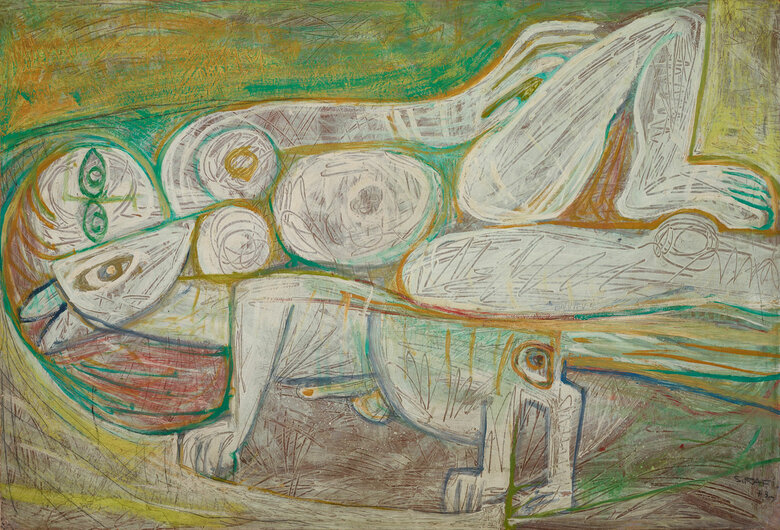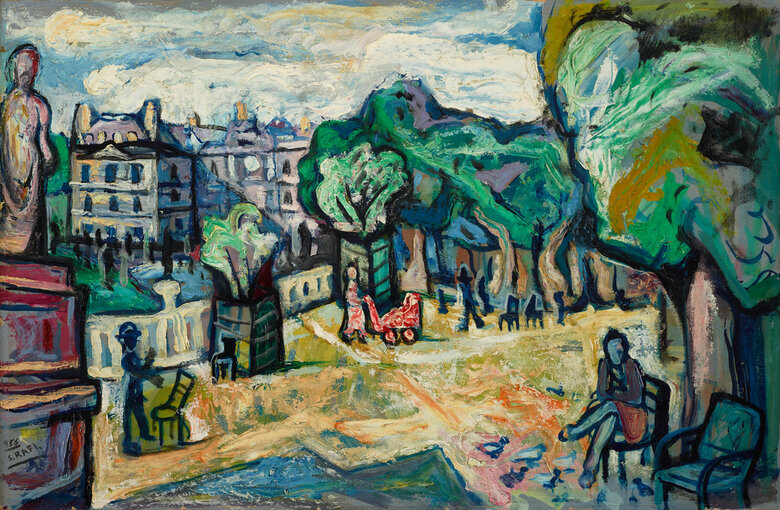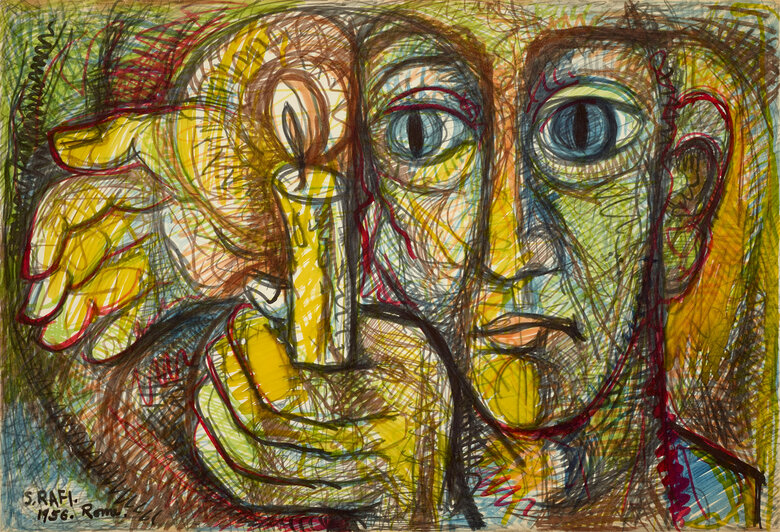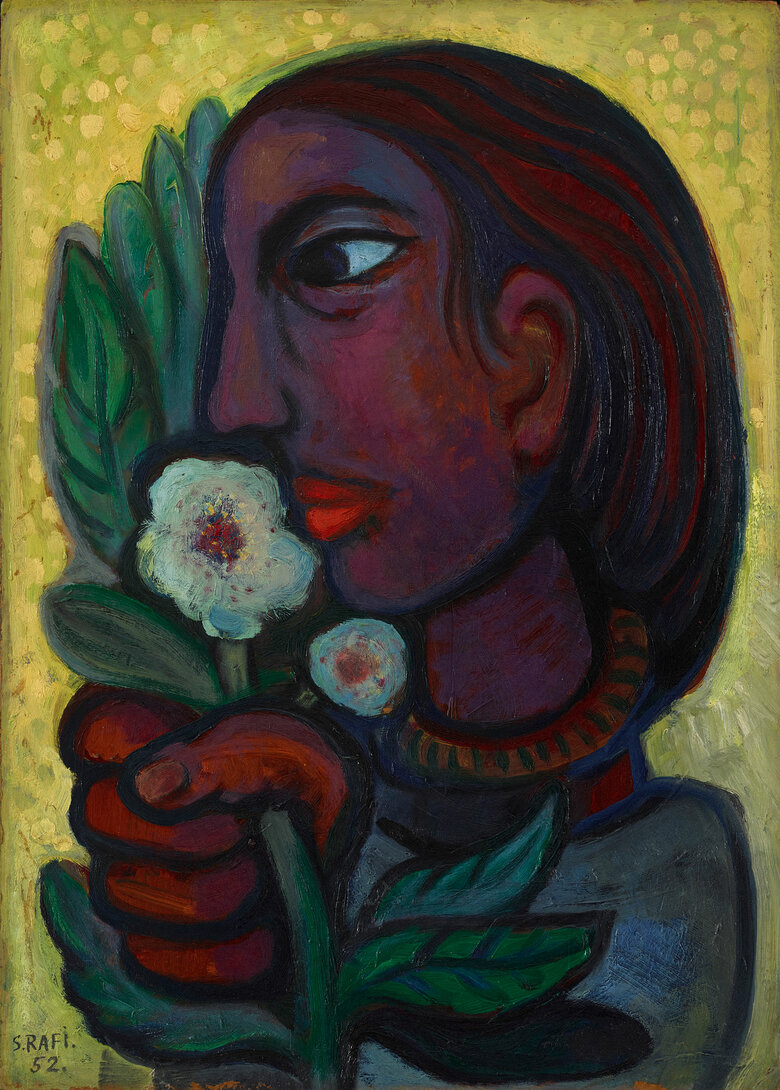Untitled (A Palestinian Scene), 1960, by Egyptian Artist Samir Rafi, depicts a defiant Palestinian family circled by armed Zionist soldiers whose faces lack defining features beyond the contours of skulls. As is evident in this painting, Rafi’s work often utilized surrealism and symbolism. The soldiers’ skulls and helmets marked with the star of David, painted in dark indigo-grey shades, contrast sharply with the bright white-grey hues of the Palestinian family. The shading across the family’s bodies further highlights their centrality. At the same time, the background’s orange, pink, and reddish hues suggest that this recurrent ‘scene’ occurs during sunset. The potted flower at the far right side of the painting and the dog next to the young boy at the center intensify the sense of domesticity and everyday life, while the family’s bare feet and modest garments compared to the booted, armed soldiers accentuate the sense of injustice.
This is not Rafi’s only rendition of such a scene. Indeed, one of his earlier pieces, The 1948 Nakba, depicts a similar scene. One of the important differences, however, is the faces of the Palestinian family: their expressions here show a mix of anger, disgust, and defiance. This burning rage is paralleled in the flaming hues of red, orange, and yellow behind them, intensifying the brightness of their figures compared to the soldiers.
Rafi is a seminal figure in the history of Egyptian art. He
was a core member and co-founder of the contemporary
art group in Egypt. Much of his earlier work focused on
social and political revolution issues, particularly against
colonial art. His main critique of the artists of his time,
especially in the 1940s and 1950s, was that they were too
influenced by elitist Western art trends and bourgeoisie
subject matters. Instead, Rafi focused on incorporating
local authenticity into his work by drawing upon local art
and cultural production.
signed front middle bottom in english

-Front.jpg)
-Front.jpg)
_SamirRafi_Front.jpg)









